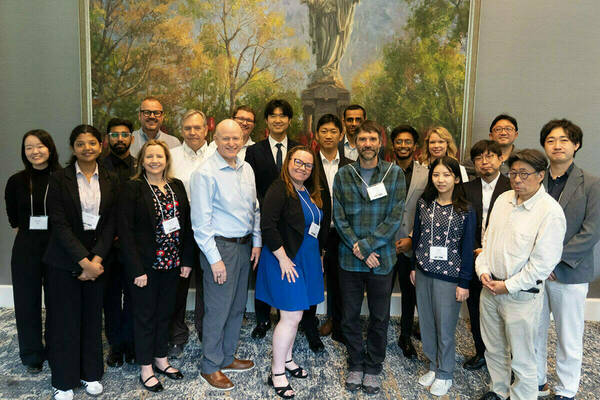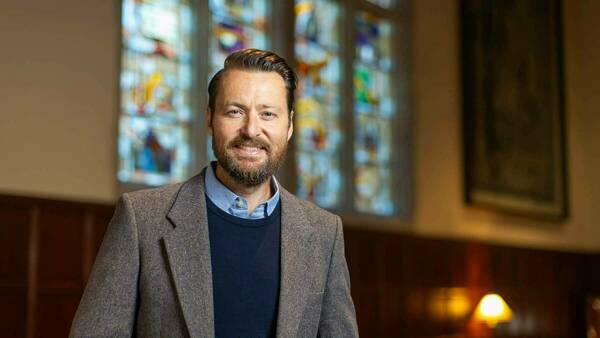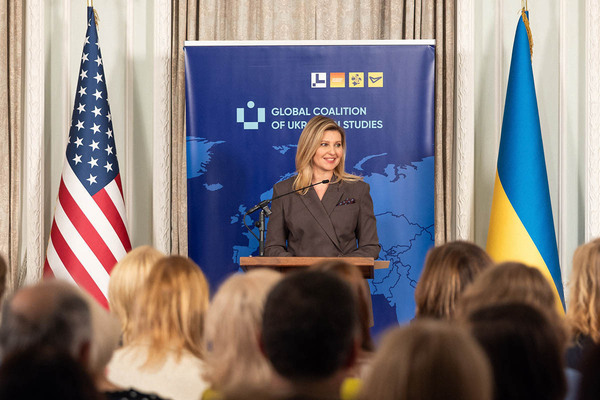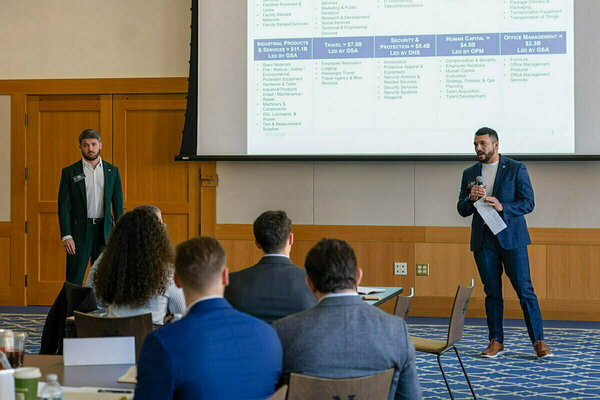A year in Poland prepares Ph.D. student for research into Polish American history back home

For eight months, Gavin Moulton, a Ph.D. student in the Department of History, studied Polish at the University of Wroclaw in support of his dissertation research on Slavic culture in the Rust Belt.
If you have spent any amount of time on the internet, you have probably unintentionally learned a few words in Polish (bóbr, pingwin, or ślimak, anyone?), but you might not know that Polish is one of the hardest Slavic languages for English speakers to learn. After spending 800 hours in intensive Polish classes at the University of Wroclaw, I can confirm that gaining proficiency in Polish is no easy task. For starters, there are seven cases and three genders, as well as separate grammatical concepts for children, non-animate objects that are alive, and flat places. As one of the oldest Slavic languages, Polish reflects many archaic grammatical concepts and exceptions that have been modernized in other languages for a long time.
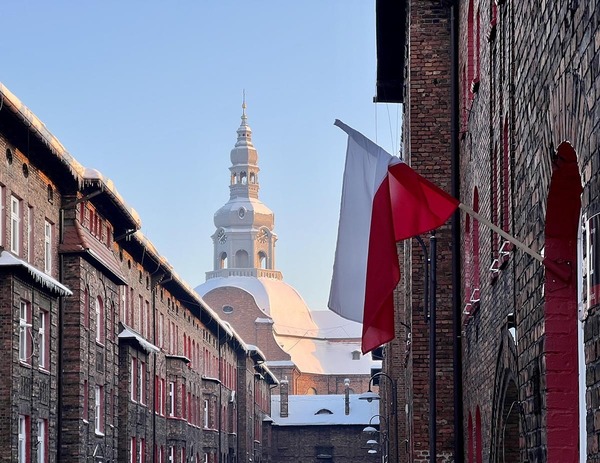
But if you are a Ph.D. student intent on studying how Polish migrants shaped a cultural region in what we know today as the Rust Belt, learning the language is the only option. During the Second Wave of migration to the United States from 1880-1920, Poles formed the largest group of Slavic migrants. Fleeing cultural oppression in the homeland (until 1918 partitioned between Germany, Austria, and Russia), and seeking economic opportunities in the United States over 1 million ethnic Poles migrated, settling primarily in the industrial regions of the Northeast and Midwest. The overwhelmingly working-class identity of the new migration, employment in mines and steel mills, and strong religious communal identity shaped an industrial-religious identity that gave a distinct character to Polish American urban geography. Indeed, you can often identify a Polish church or neighborhood by its proximity to a steel mill or other heavy industry.
Learning Polish has prepared me for dissertation research on this influential part of American history. As Poles experienced discrimination from both American society and the Roman Catholic Church, the diaspora joined together to build new autonomous institutions. Its members continued to write, read, and speak in Polish through several generations. This means that the most important sources for understanding this history are found in Polish until the 1960s.
Studying abroad brings new research tools back home
When I return to the United States, I will begin several months of archival research in the Rust Belt, traveling to Polish churches to document industrial-religious art and consult parish, diocesan, and union archives to better understand this cultural region.
While studying in Poland, I frequently traveled to the industrial region of Upper Silesia to see how the Polish counterpart compares to the American region that I study. The city of Katowice is known as Poland’s Pittsburgh for its many coal mines and steel industry. Historically, Katowice was part of Germany and joined the new Polish state during the interwar period. Dangerous conditions in the mines and contested border identity created parallel conditions to those experienced by migrants in the United States and produced a similarly distinct religious visual culture blending the industrial and sacred. By traveling to Silesia and corresponding with professors in Polish, I can now integrate a comparative international perspective into my research.
Support from the Nanovic Institute and Graduate School Professional Development Award enabled me to dedicate the better part of a year to language study and research abroad. As Ph.D. programs are increasingly compressed and language programs face funding cuts, I feel especially grateful for Notre Dame’s continued investment in its students and fostering of an international community. Polish historical sources in the United States capture a valuable outlook on mass unionization, company towns, and the history of capitalism and more broadly foreign language sources challenge simplistic narratives of American history by providing a richer understanding of how class, nationality, and race have shaped and continue to inform our contemporary society.
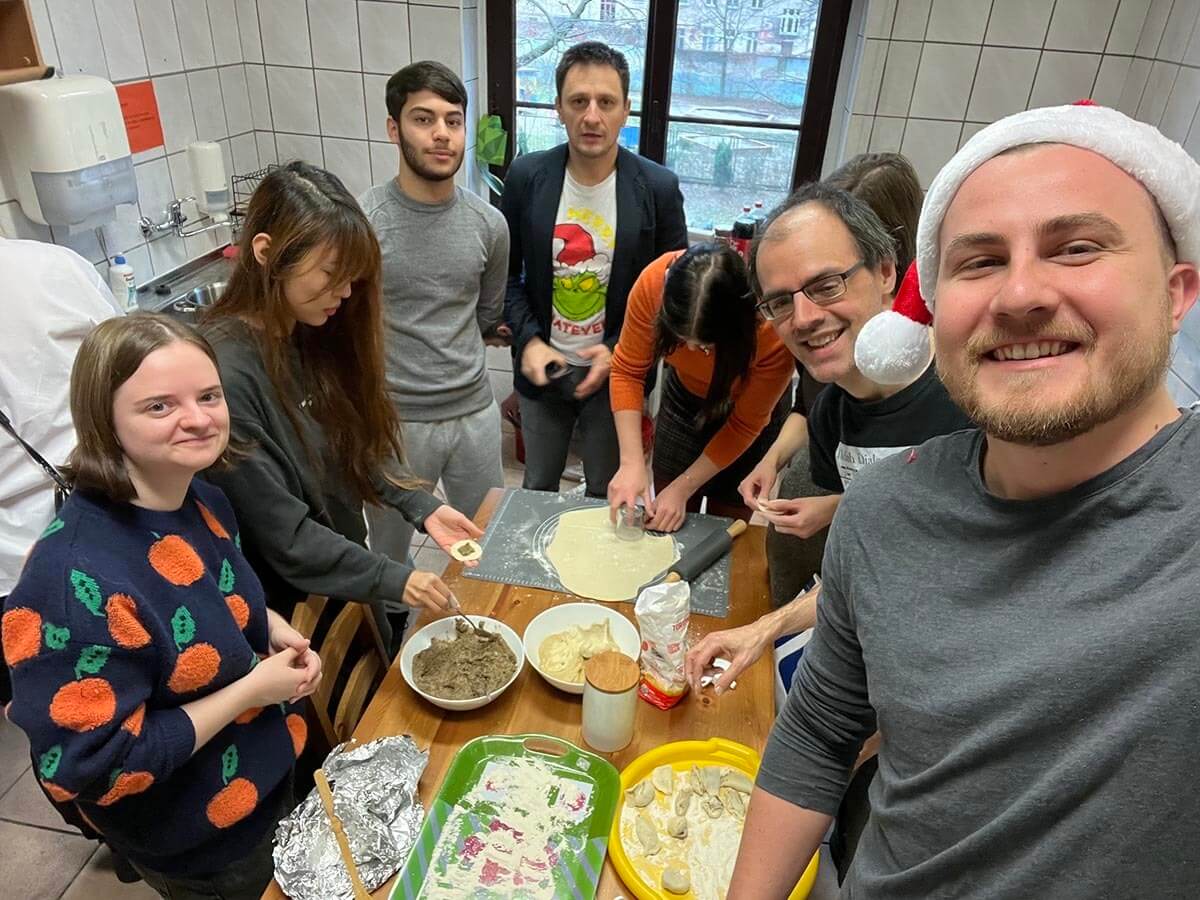
Originally published by at nanovic.nd.edu on September 04, 2024.
Latest Research
- Fighting for maternal healthThe United States has the highest maternal mortality rate of developed nations. An innovative postpartum care model from Notre Dame can save mothers around the globe. Read the story Originally…
- NSF Cyber SMART’s fall meeting shapes fifth year of project, legacy and future plans, and adds new memberThe U.S. National Science Foundation (NSF) Cyber SMART center gathered for its fall meeting on the University of Notre Dame campus this September. The meeting served as a checkpoint with progress reports and new projects from research leads and students…
- Slavic and Eurasian studies professor wins Humboldt fellowship to research how Russia’s religious past shapes its presentWhen Russia invaded Ukraine on Feb. 24, 2022, Sean Griffin realized his second book needed a new title. Griffin, an associate professor in the University of Notre Dame’s Department of…
- Notre Dame’s R.I.S.E. AI Conference builds interdisciplinary collaboration to inform human-centered artificial intelligenceAs artificial intelligence (AI) transforms nearly every sector of society — from healthcare and education to governance and global development — a critical question emerges: How can we conscientiously design and deploy these powerful technologies to positively impact society? This…
- University of Notre Dame joins the Global Coalition of Ukrainian StudiesThe University of Notre Dame has joined the Global Coalition of Ukrainian Studies after signing a Memorandum of Cooperation (MOC), formalized on September 24, 2025, at the Ukrainian Institute of America in New York City. Notre Dame joined four other American…
- The University of Notre Dame’s Mendoza College of Business and Industry Labs team up to inspire national security manufacturing competitiveness in the regionThe South Bend - Elkhart Region is full of manufacturing companies that are poised to grow, and Executive Master of Business Administration (EMBA) and Master of Business Administration (MBA) students at the University of Notre Dame are finding innovative ways to contribute to that growth. Earlier…









